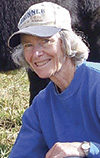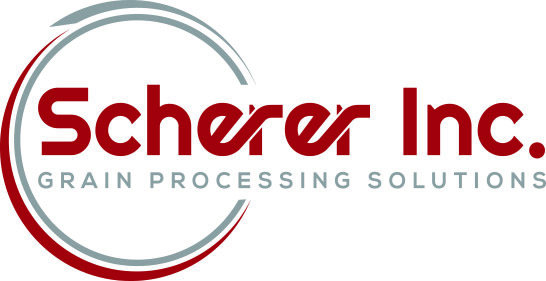An article in the Journal of Dairy Science in 2003 stated the annual impact on dairy cattle is most significant, costing the dairy industry about $897 million per year. Annual loss in beef cattle production has been estimated at $369 million per year.
Dr. Don Spiers of the Department of Animal Science, University of Missouri, says that last year graduate students from the University of Missouri School of Business looked at this earlier paper and developed a thermal heat-stress calculator to estimate, by state, how much money producers would lose to heat stress.

They looked at inflationary costs and brought to the current date what these losses would be. Dairy cows have more significant loss to heat stress than beef cows unless they are feedlot animals or grazing endophyte-infected fescue pastures (which makes animals less heat-tolerant).
“A group of us do heat-stress research on beef cattle – with studies at the University of Missouri, Tami Brown-Brandl (USDA) at Clay Center, Nebraska, and University of Nebraska, and John Gaughan at University of Queensland. Australia has had incredible heat-stress problems during the past decades with heat and drought."
"John Gaughan’s job is to help producers reduce heat stress. They are doing much more work than we are, looking at heat stress,” says Spiers.
Heat is a significant problem here, however, especially in feedlots. “In June of 2009, we had severe heat in the Midwest. More than 1,000 feedlot animals in Nebraska perished when temperatures got up toward 100ºF. The problem was compounded by rain the week before, so it was very humid,” says Spiers.
Heat waves are common in Kansas, Nebraska and Missouri, and that’s where many feedlots are located.
Researchers have been working on ways to predict and prevent heat stress. “Here in Missouri, we did research with transmitters. The transmitter is swallowed by the animal and lodges in the reticulum. It transmits the temperature as often as you want, to an antenna up to 300 feet away."
"In one study, we had three breeds of cattle in a pasture and picked up the signals wherever the cattle went. You don’t need them in every animal but might use sentinel animals that give you an idea of heat-stress level,” he explains.
“We did one study in a feedlot, looking at what the determining factors might be for predicting how hot an animal will get during the summer. We found that knowing the minimum core temperature for that animal (which occurs at about 7 a.m.) is important for determining how hot the animal will get during the day, since it’s cumulative,” he says.
“Another thing that determines how high their body temperature will go during the day is how fast the air temperature rises. The rise from 6 a.m. to noon shows how hot it’s going to get.”
If you know the minimum core temperature of the cattle and observe the temperature change from 6 a.m. to noon, you can be alerted to the risk for heat stress.
You have time to do something early in the day with those cattle and are not in the position of responding after they are already at risk of dying. Having access to animal body temperature as well as air temperature data can give producers a good management tool.
“Monitoring respiration rate is also important. Even if you can’t measure body temperature, you can measure respiration rate – which is a more rapid response to heat than their body temperature. You don’t need any equipment to measure respiration rate,” says Spiers.
Anything below 40 breaths per minute is indicative of healthy, safe temperature. “When it gets up to 80 breaths per minute, this is a sign of heat stress. Up to 120 is more serious. By the time they get to 160 breaths per minute, their tongues are sticking out, and they are drooling and have a real problem,” he says.
If a person is moving cattle on a hot day and some start panting with mouths open and drooling, it’s time to halt and let them rest. If they go beyond the point of drooling (too dehydrated), the risk of death is high.
John Gaughan (Australia), in collaboration with Terry Mader in Nebraska, developed a panting score index to help producers assess the dangers.
Dr. Stephen Blezinger, a cattle nutritionist in Sulphur Springs, Texas, says the primary way cattlemen manage heat stress in his part of the country (aside from making sure there is adequate shade and water) is to add Brahman influence in most beef herds. Zebu cattle originated in warmer climates and are well-adapted to heat.
“On a hot day, in a pasture where there are Angus cattle and Brangus cattle, both breeds are black (a color that generally does not handle heat very well), but the Brangus are out grazing and the Angus are generally in the shade. Brangus are three-eighths Brahman and can handle the heat better,” he says.
British and European breeds commonly don’t perform as well in a hot climate. Zebu cattle have different hair, more sweat glands and can keep themselves cooler. “One of the European breeds that tends to handle heat better than most is Braunvieh, but I’m not sure why,” he says.
Besides genetics, it’s important to have adequate shade and water. “If you compromise on these, you lose some performance simply because the cattle won’t eat as much when they are hot and miserable,” Blezinger explains.

“When there’s green grass, most people stop feeding a protein supplement but still keep salt/mineral in front of the cattle. Salt is important in hot weather. (It is lost through sweating.) The salt content of most mineral supplements is generally adequate."
"Another thing that seems to help cattle in the heat is feeding a yeast culture. It modifies the rumination pattern, improving fiber digestion and improving overall digestive efficiency, and cattle may not produce as much heat in the digestion process during hot periods.”
The normal heat production from fermentation and digestion is useful in winter for body heat in cold weather but detrimental in summer – creating more heat the body must get rid of.
“Another thing some producers are using, though it needs more research, is enzyme products. These are based on a microbial culture such as Aspergillus Oryzae (fungi), Bacillus subtilis (bacteria) or Saccharomyces cerevisiae (yeast)."
"Products that have enzyme activity also facilitate better fiber digestion. We need cattle to be able to digest fiber very efficiently in summer and not produce as much heat,” he says.
It’s also important to make sure cattle have the proper levels and sources of trace minerals in their mineral supplement. “There is some interesting data showing that when beef animals are stressed, they excrete a higher amount of zinc and copper, and this must be replenished adequately.” Trace minerals are important to a strong immune system and good health in general.
“Regarding heat stress, there are some additional issues. If cattle are bunching up in shady areas, if the rancher hasn’t controlled horn flies, these pests make it that much worse,” says Blezinger.
There are often multiple stresses compounding, with adverse impacts on cattle health, growth and reproduction. ![]()
This article origianlly appeared in print with "Factors that influence heat stress."
PHOTO 1: Cattle need some respite shade from the heat, especially during the hottest period of the day. Photo courtesy of staff.
PHOTO 2: Don Spiers taken when he was in Australia for research. Photo courtesy of Don Spiers.
PHOTO 3: If cattle are bunching up in shady areas, if the rancher hasn’t controlled horn flies, these pests make it that much worse. Photo courtesy of Steve Blezinger.









